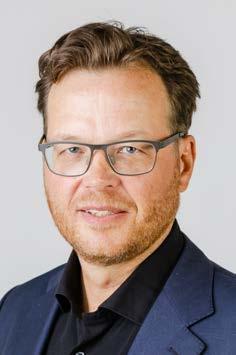Seminar of the Contact Group Health and Chemistry : Super spreading events and the development of the COVID-19 pandemic: what is the role of indoor air quality?
Background
Recent studies of super spreading events have demonstrated beyond any reasonable doubt that viruses are released during exhalation, talking and coughing in microdroplets small enough to remain airborne and pose an exposure risk when carrying a high virus load. However, the contribution of aerogenic transmission remains a controversial topic in the spread of the SARS-CoV-2 virus. In March-April 2020 there were reports of certain events where many persons were linked to the same source of infection. Such super spreaders were linked to après-ski-bars in Austria, Karaoke bars in South Korea, churches and other gatherings where many persons meet in confined poorly ventilated rooms. After the first wave households and certain workplaces were reported to be hotspots. Large groups of hundreds of workers in certain production facilities like slaughter houses, fish factories, textile sweat shops and cooled sorting and storage of fruits were reported as hot spots of infections in the aftermath of the first wave. In these settings airborne transmission may not always be the only transmission route but certainly an important explanation of the spatial patterns of group infections. On July 6th 2020 a group of 239 scientist published an open letter ‘It is Time to Address Airborne Transmission of COVID-19’ in Clinical Infectious Diseases (see https://academic.oup.com/cid/article/doi/10.1093/cid/ciaa939/5867798). The next day the WHO announced to take this message seriously and study the possibility of this third route of transmission in addition to transmission by direct contact and by fomite.
What can the super spreading events tell us about the role of the indoor air quality in the development of the pandemic. Based on the analysis of a range of such spreading events a pattern occurs that relates to conditions such as high occupancy, poor supply of fresh air and some specific activities such as talking loud and singing. What can super spreading events learn us about the transmission of the virus? How did they contribute to the pandemic in early 2020 and how important are these events overall future development of the endemic, including their potential role in next waves? How can sufficient and effective ventilation and regulated occupancy contribute to reducing the indoor risk of infection?
Programme
| 09:30 | Welcome | Henk Jans on behalf of NVMM Paul Scheepers on behalf of CGC |
|
| 09:45 | 1 | How aerosols contribute to the transmission of SARS-CoV-2? | Lidia Morawska |
| 10:30 | 2 | Transmission of SARS-CoV-2 by inhalation of respiratory aerosol in the Skagit Valley Chorale super spreading event | Shelly Miller |
| 11:15 | Break | ||
| 11:30 | 3 | How did the users of the same office in Delft become infected? | Atze Boerstra |
| 12:45 | Discussion | ||
| 13:00 | End |
Bakground information about the presenters
 |
Prof. Lidia Morawska, PhD is director of the International Laboratory for Air Quality and Health (WHO CC for Air Quality and Health and co-director - Australia, Australia – China Centre for Air Quality Science and Management, at the Queensland University of Technology, Brisbane Australia |
 |
Dr. ir. Atze Boertstra, ABB Binnenmilieu, TU Delft, Klimaatregeling, faculteit Werktuigbouwkunde & promotie TU Eindhoven, unit Building Physics & Systems (BPS) Specialisatie thermisch binnenklimaat, luchtkwaliteit, beleidsadvisering, PPS/DBFMO projecten, installatietechniek, research & development, rechtszaken (https://binnenmilieu.nl/wie/) |
 |
Prof. dr. Shelly Miller PhD, Department of Mechanical Engineering, Colorado University, Boulder, Colorado, US, BSc from Harvey Mudd College (1986) and MSc and PhD from the, University of California at Berkeley (1991, 1996). Teaching: MCEN 4131/5131 Air Pollution Control, MCEN 4141/5141 Indoor Air Pollution, MCEN 5208 Air Quality Measurements and Aerosols, GEEN 1400 Engineering Projects. Research: Urban Air Quality, Indoor Air Quality, Bioaerosols, Air Pollution Control Technologies including Infection Control (https://www.colorado.edu/even/people/shelly-miller) |
De Contactgroep Gezondheid en Chemie
De Contactgroep Gezondheid en Chemie (CGC) is een multidisciplinair discussieforum met als doel het uitwisselen van informatie over de gezondheid van de mens in relatie tot chemische factoren en het bevorderen van het netwerk van mensen werkzaam op dit terrein. Dit wordt gerealiseerd door het organiseren van themamiddagen voor bedrijfsartsen, veiligheidskundigen, arbeidshygiënisten, toxicologen, medisch milieukundigen en milieugezondheidskundigen. De middagen worden, afhankelijk van het thema, georganiseerd in samenwerking met de Nederlandse Vereniging voor Arbeidshygiëne (NVvA), de Nederlandse Vereniging van Veiligheidskundigen (NVVK), de Nederlandse Vereniging voor Toxicologie (NVT), de Nederlandse Vereniging van Medische Milieukunde (NVMM) en de Nederlandse Vereniging voor Arbeids- en Bedrijfsgeneeskunde (NVAB). De themamiddagen bieden de mogelijkheid om al deze verschillende specialisten bij elkaar te brengen en zo multidisciplinaire netwerken te laten ontstaan.
Meer informatie over programma’s van de CGC kunt u vinden op de website van de Nederlandse Vereniging voor Arbeidshygiëne, www.arbeidshygiene.nl, door te kiezen voor “contactgroepen” en “CGC”. U vindt daar de programma’s en ppt-files van de CGC-bijeenkomsten die al hebben plaatsgevonden. Als lid van de CGC ontvangt u uitnodigingen voor nieuwe bijeenkomsten.
Tijdens de bijeenkomst worden door de CGC uitsluitend aan leden van de CGC certificaten van deelname uitgereikt ten behoeve van certificering. Deelnemers die geen lid zijn van de CGC maar wel lid zijn van één van bovengenoemde beroepsverenigingen kunnen hun eigen beroepsvereniging verzoeken om een certificaat van deelname te verstrekken.

